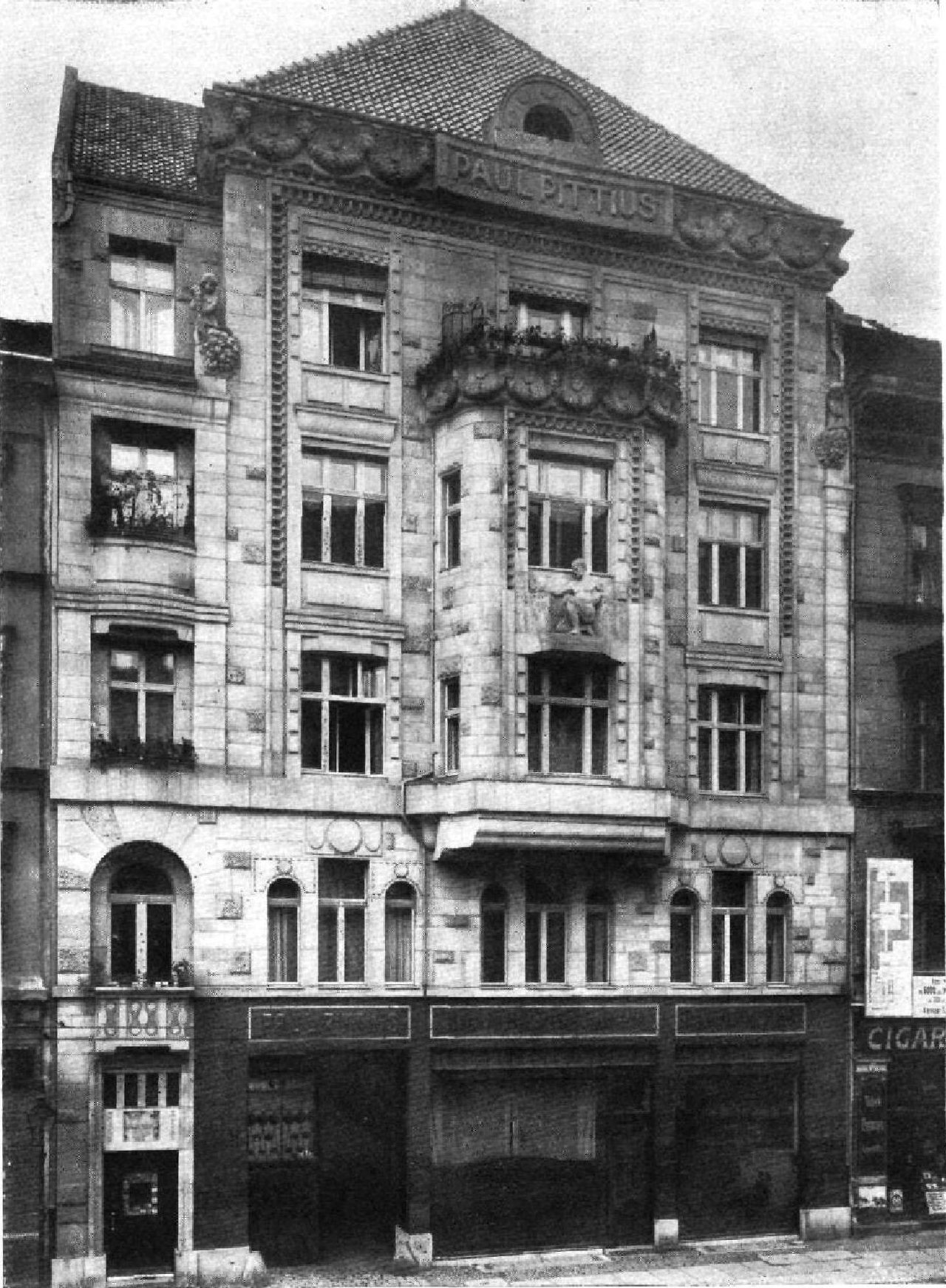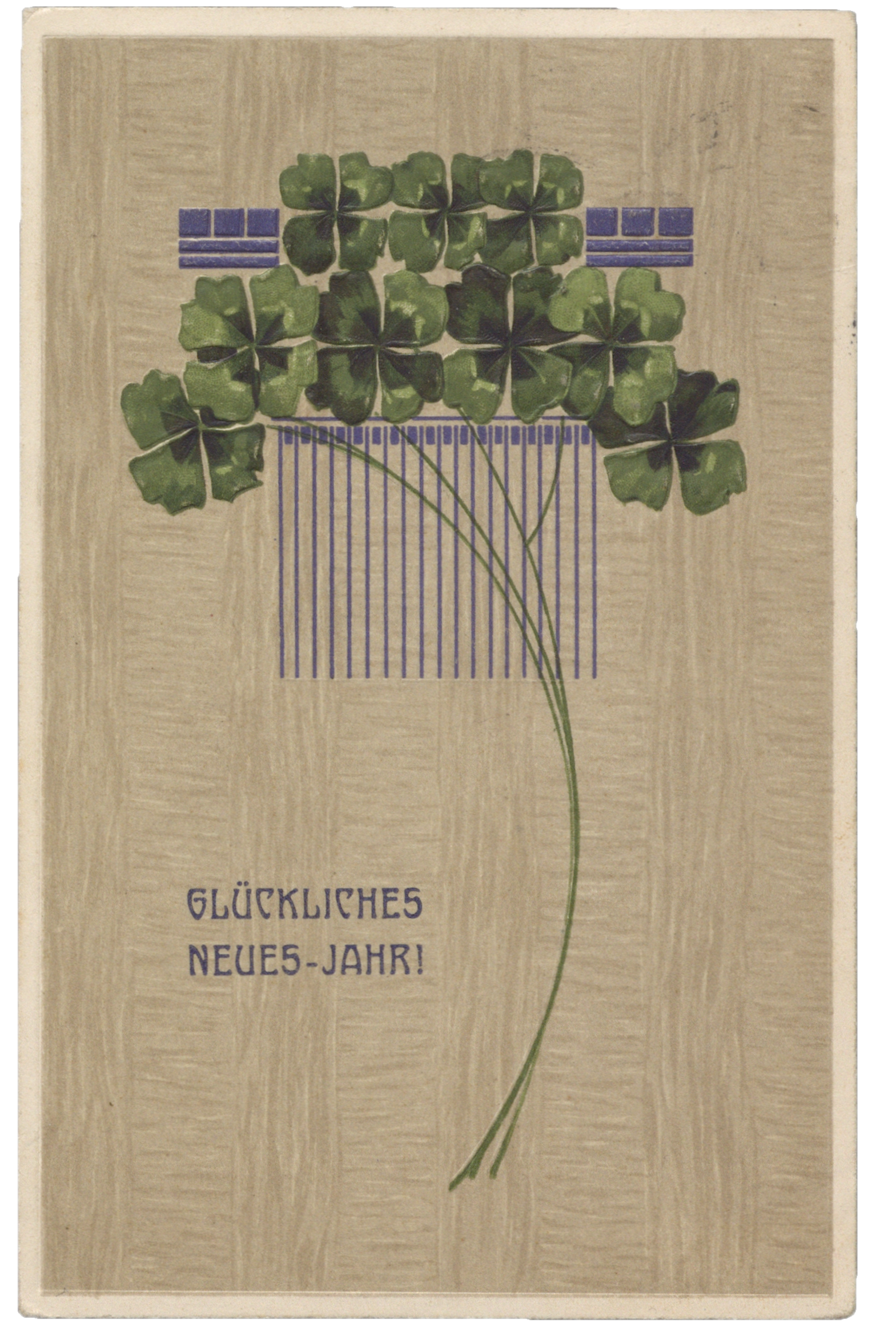In 2017, the Deutsches Technikmuseum in Berlin acquired a historic lithographic workshop with a printing press, a wide variety of working materials, and nearly one hundred lithographic stones. Some of these stones have a very special history. They originally belonged to the "Paul Pittius Lithography Print Shop and Luxury Card Plant" in Berlin, whose owners, Martin and Julius Gerson, were persecuted and murdered as Jews under National Socialism. The exhibition tracks the path of the stones back in time, tells the story of the print shop and recalls the fate of the two brothers. It is the result of provenance research at the Deutsches Technikmuseum and was created in conjunction with the families of the former owners.
Lithographic Stones Speak
The Story of the Gerson Brothers and the Paul Pittius Print Shop
Lithographic Stones Speak
01
Provenance Research at the Deutsches Technikmuseum
What is provenance research?
Provenance research is concerned with the origin of objects in the museum and the history of their former owners. The aim is to identify cultural items looted under National Socialism and to find a fair and just resolution together with the relevant heirs.
In the past, provenance research focused mainly on paintings and art collections. However, the Nazi regime robbed or otherwise deprived the mostly Jewish persecutees of much more than just works of art: radios, typewriters, bicycles, cameras as well as entire companies and their machinery were forfeited as well. The aim of this digital exhibition is to show that such objects are also found in museums today and that research into their origins is possible and necessary.
02
Three Lithographic Stones with a Story
"Not much time left to salvage anything else."
The lithographic stones were acquired by the museum as part of its purchase of Dietmar Liebsch's lithography workshop in 2017. He had diligently set up his shop in the GDR and had jointly run it with his wife, the lithographer Helga Liebsch, since 1972. Standing in front of the former location of the Paul Pittius company at Köpenicker Strasse 110 in Berlin-Mitte, he tells how he was able to procure the basics of his workshop. In 1964, the Pittius Print Shop was to be closed and the building demolished. Helga Liebsch worked at Pittius and learned that the machines, working materials and stones were also to be discarded. Dietmar Liebsch then bought some of that equipment from the bankruptcy trustee for 50 "eastern marks" and put it all in storage. Thus began the history of his workshop and ended the history of the once important Paul Pittius Print Shop.
03
The Paul Pittius Lithography Print Shop and Luxury Card Plant
04
The Owners of the Paul Pittius Company: Julius and Martin Gerson
Paul Otto Hermann Pittius and Albert Wolff founded the Paul Pittius company in 1899. Paul Pittius left the business in 1904, but the company kept its name. At the same time, the brothers Julius and Martin Gerson took over operations in the form of a general partnership beginning in 1919 - Julius as commercial manager, Martin as technical manager. Julius Gerson was born in Frankfurt/Oder in 1868 as the son of a grain merchant; his younger brother Martin was born there in 1871. They both moved to Berlin around 1900 where prior to taking over the Paul Pittius company they had first founded a wholesale grain business with their brother Georg.
Both Julius and Martin Gerson were politically active. Julius became a member of the SPD in 1898 and then joined the USPD and the Spartacus League in 1917. Both brothers belonged to the "Bund Neues Vaterland", which was founded in 1914 as the most important pacifist association during World War I and was eventually banned in 1916. During that time, their two residences in Berlin-Dahlem became a meeting place for social democrats and socialists in Berlin: Rosa Luxemburg, Clara Zetkin, Franz Mehring and Hugo Haase were among their circle of friends. They are also likely to have financed and probably organized the printing of pacifist pamphlets and thereby came into the sights of the political police. In 1918 Julius was indicted for these activities, but ultimately acquitted.
As members of the aforementioned pacifist league, which has since been renamed the "German League for Human Rights," the two brothers remained true to their convictions even after the First World War. They were thus exposed to particular danger as both Jews and political opponents of National Socialism when the Nazis came to power on January 30, 1933.
05
The Fate of the Gersons and Their Company After 1933
06
Nazi-Looted Goods in the Museum
Fair and Just Solution
After 1933 Julius and Martin Gerson were persecuted as Jews and political opponents of National Socialism and had to sell their company under duress. For this reason, the litho stones that are now in the Deutsches Technikmuseum are to be regarded as Nazi-confiscated cultural property – Nazi-looted property, for short. In accordance with the Washington Principles formulated in 1998, Nazi-looted property should be returned to the looted persons or their heirs or another fair and just solution should be mutually agreed upon.
After the Deutsches Technikmuseum announced the discovery of the lithographic stones, relatives of the Gersons contacted the museum - initially to inquire about the completely forgotten history of the Paul Pittius company. Joint research efforts led to better information about the company and in particular about the fate of the Gerson brothers. The question of how to further deal with the litho stones was then discussed with the heiress, Julius Gerson's granddaughter. She decided that they could remain in the Deutsches Technikmuseum and that an exhibition plaque should commemorate Martin and Julius Gerson and the Paul Pittius Lithography Print Shop.
On March 23, 2023, on the initiative of the family, a Stolperstein for Julius Gerson was laid in front of the building at Im Dol 23 in Berlin-Dahlem. A Stolperstein in front of the building at Hohenzollerndamm 35a has served as a small memento to Martin Gerson since 2016.
Epilogue, or what this exhibition does not tell
This exhibition has limited itself to following the origins of the lithographic stones and recalling the history of their owners, the brothers Julius and Martin Gerson. However, many other stories have been left untold. For instance, the Gersons' eight siblings were not mentioned, including two who were deported and murdered during the Nazi era and a brother who survived in hiding.
It also does not recount the stories of their families. The Gersons' children left Germany immediately after the Nazis came to power. Martin's daughter Susi and his wife Rosa were deported to the French internment camp Gurs in 1940. After her release a few months later, Susi married the artist Alberto Magnelli, an important figure in the abstract painting movement. When the département where they resided was occupied by German troops in 1943, Susi and Rosa were hidden by acquaintances until false passports enabled them to go into hiding in Paris, where they were liberated in 1944. Julius' son Heinz first emigrated to Palestine and subsequently joined the British Army. In November 1945, he arrived in Berlin as a soldier and set about trying to find surviving family members. Through the efforts of the rescue network of the American Varian Fry, Julius' daughter Eva, who worked as a philologist after the war, was able to flee to the USA together with her husband, the writer and historian Valeriu Marcu, and their daughter.
The exhibition also did not address the role of the two longtime employees of the Paul Pittius Lithography Print Shop, who had taken over the business in 1936 and helped move the Gersons' assets safely away from the state's grasp. After 1945, Philipp Kühnlein not only financially supported the surviving family members of the Gersons, but also acted on their behalf before various restitution offices.
The exhibition organizers hope that others will pursue these till now untold stories and retell them.
Acknowledgements
First and foremost, we thank Miki Marcu, the granddaughter of Julius Gerson. Her willingness to let the lithographic stones remain in the museum gave us the opportunity to memorialize Julius and Martin Gerson with the original stones.
Our special thanks go to Angelika Lemke, who joined with us in researching the history of Julius and Martin Gerson and assisted us throughout the creation of this exhibition. She not only arranged contact with the heiress, but also contributed her own research and extensive material from family holdings.
Special thanks go to Norbert Nicking and family for the consultations about the family history and allowing us to use them in this exhibition.
Thanks go to Philip Kochman and the family of Philipp Kühnlein for all the material documenting the everyday activities at the Paul Pittius company, with the help of which more stones were able to be identified.
This exhibition was created as part of the project "Identification of Nazi-Looted Goods in the Collection of the Deutsches Technikmuseum Inventoried between 1982 and 1989" funded by the German Lost Art Foundation.
Eine virtuelle Ausstellung von
Team
Peter Prölß and Elisabeth Weber, provenance research at the Deutsches Technikmuseum; supported by Katja Boegner (for the English version).
Translation by Barry Fay, Berlin.
Diese Ausstellung wurde am 27.06.2023 veröffentlicht.
Impressum
Die virtuelle Ausstellung Lithographic Stones Speak wird veröffentlicht von:
Stiftung Deutsches Technikmuseum Berlin
Trebbiner Straße 9
10963 Berlin
gesetzlich vertreten durch
Director Joachim Breuninger
Telefon:
+49 (0)30 / 90254-0
Fax:
+49 (0)30 / 90254-175
E-Mail:
info@technikmuseum.berlin
Inhaltlich verantwortlich:
Joachim Breuninger
Kurator*innen:
Peter Prölß, Elisabeth Weber
Rechtliche Hinweise:
Die Deutsche Digitale Bibliothek verlinkt die virtuelle Ausstellung auf ihrer Internetseite https://www.deutsche-digitale-bibliothek.de/content/virtuelle-ausstellungen. Dabei wurde auf die Vertrauenswürdigkeit der Institution, welche die Ausstellung veröffentlich hat sowie die Fehlerfreiheit und Rechtmäßigkeit der virtuellen Ausstellung besonders geachtet. Der auf dieser Internetseite vorhandene Link vermittelt lediglich den Zugang zur virtuellen Ausstellung. Die Deutsche Digitale Bibliothek übernimmt keine Verantwortung für die Inhalte der virtuellen Ausstellung und distanziert sich ausdrücklich von allen Inhalten der virtuellen Ausstellung, die möglicherweise straf- oder haftungsrechtlich relevant sind oder gegen die guten Sitten verstoßen.
DDBstudio wird angeboten von:
Stiftung Preußischer Kulturbesitz, gesetzlich vertreten durch ihren Präsidenten,
handelnd für das durch Verwaltungs- und Finanzabkommen zwischen Bund und Ländern errichtete Kompetenznetzwerk
Deutsche Digitale Bibliothek
c/o Stiftung Preußischer Kulturbesitz
Von-der-Heydt-Straße 16-18
10785 Berlin
Telefon: +49 (0)30 266-41 1432, Fax: +49 (0) 30 266-31 1432,
E-Mail: geschaeftsstelle@deutsche-digitale-bibliothek.de
Umsatzsteueridentifikationsnummer:
DE 13 66 30 206
Inhaltlich verantwortlich:
Dr. Julia Spohr
Leiterin der Geschäftsstelle
Finanzen, Recht, Kommunikation, Marketing
Deutsche Digitale Bibliothek
c/o Stiftung Preußischer Kulturbesitz
Von-der-Heydt-Straße 16-18
10785 Berlin
Konzeption:
Nicole Lücking, Deutsche Digitale Bibliothek
Stephan Bartholmei, Deutsche Digitale Bibliothek
Dr. Michael Müller, Culture to Go GbR
Design:
Andrea Mikuljan, FIZ Karlsruhe - Leibniz Institut für Informationsinfrastruktur GmbH
Technische Umsetzung:
Culture to Go GbR mit Grandgeorg Websolutions
Hosting und Betrieb:
FIZ Karlsruhe - Leibniz Institut für Informationsinfrastruktur GmbH









